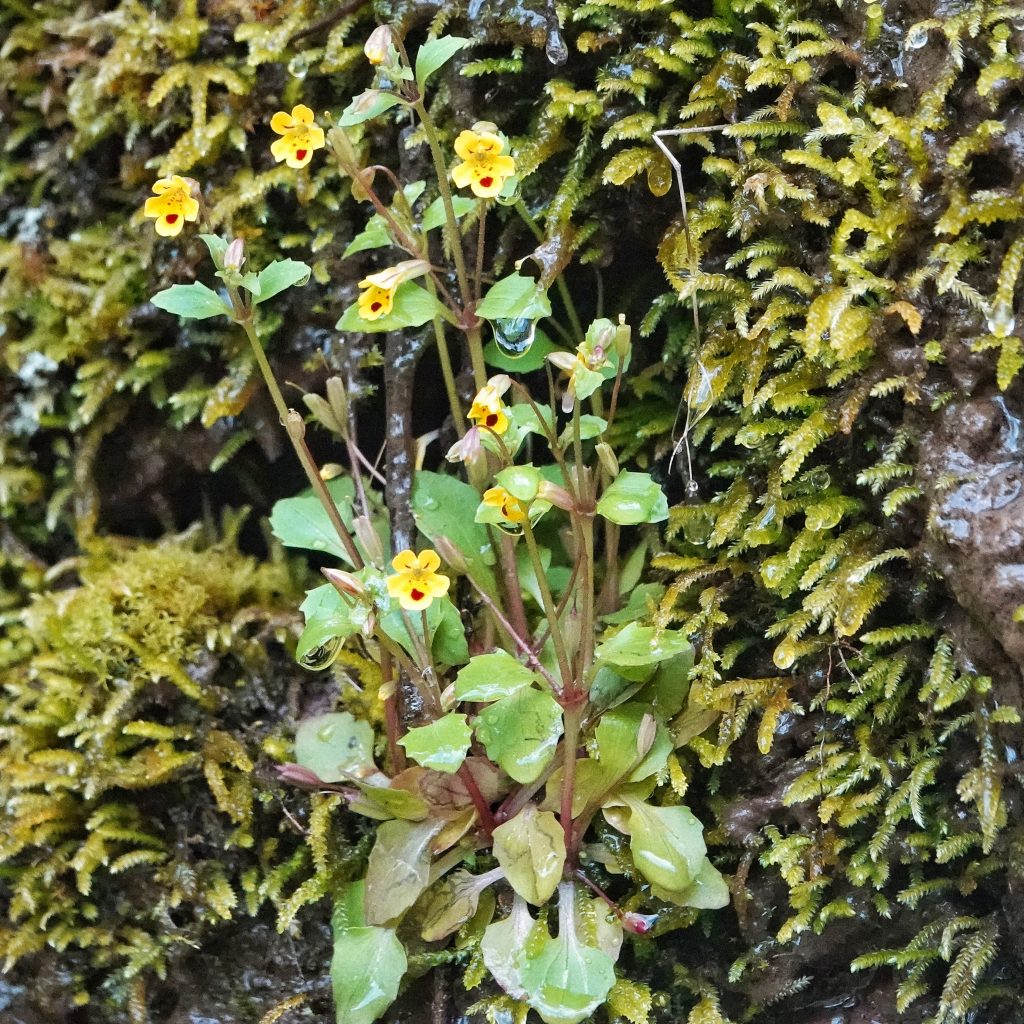
I have to admit that in my recreational naturalist investigations I am most drawn to the relationships amongst lifeforms. I also find it interesting to see what relationship humans have had with these organisms, although, with the exception of ivy, scotch broom, Japanese knotweed, and gypsy moths, I’m not a fan of the good/bad adjectival modifiers, or the friend/foe designation, when applied to wild living organisms. However, I have to admit, I can fall into the trap of wondering ‘what is it for?’
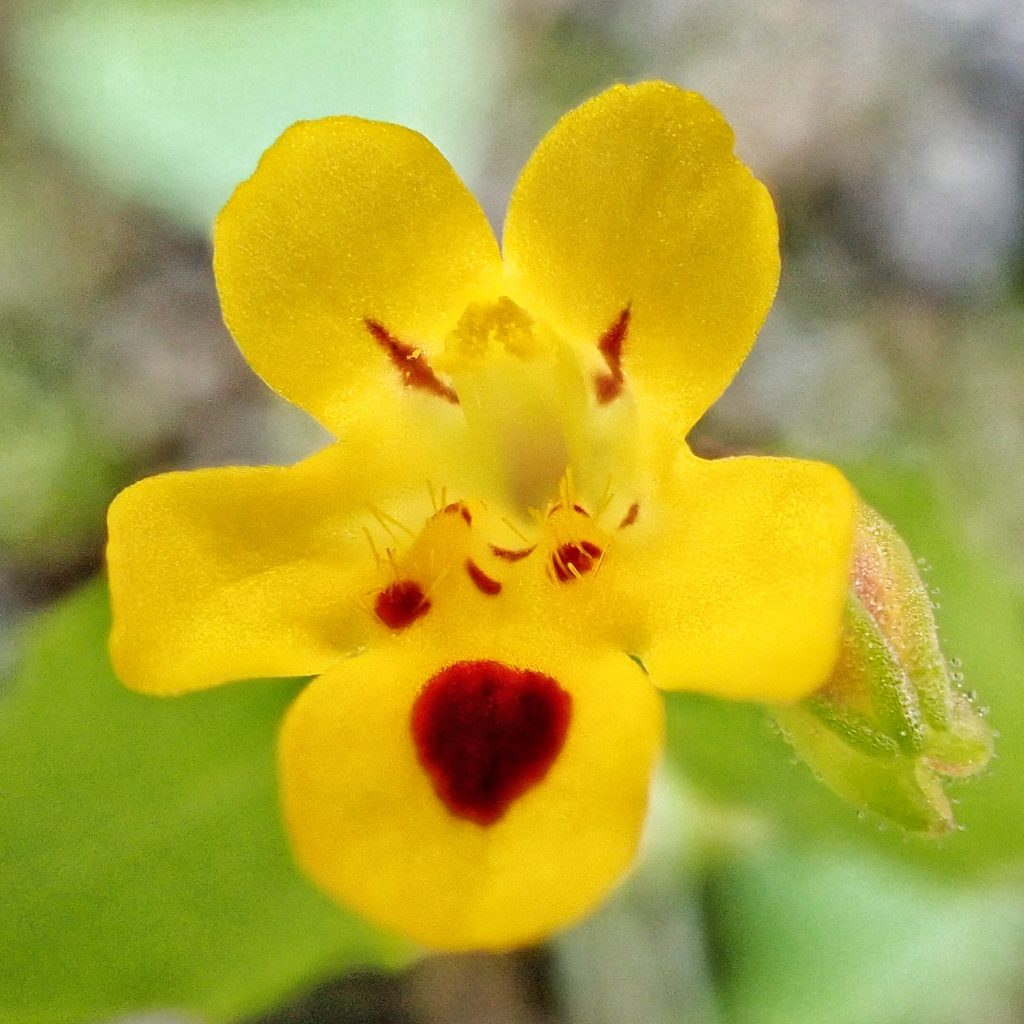
In the case of Erythranthe alsinoides (which is unconscious of bearing the colloquial names chickweed monkeyflowers and wing-stemmed monkeyflowers) it doesn’t appear to be ‘for’ anything but itself. I can’t seem to find anything that relies upon it for survival, and it doesn’t seem to have had any utilitarian purposes for humans. It does get some love from the gardening community, and it is certainly a delicately beautiful plant, very aesthetically pleasing with its handsome toothed leaves and striking maroon marked yellow flowers that are often backdropped by moss and rock.
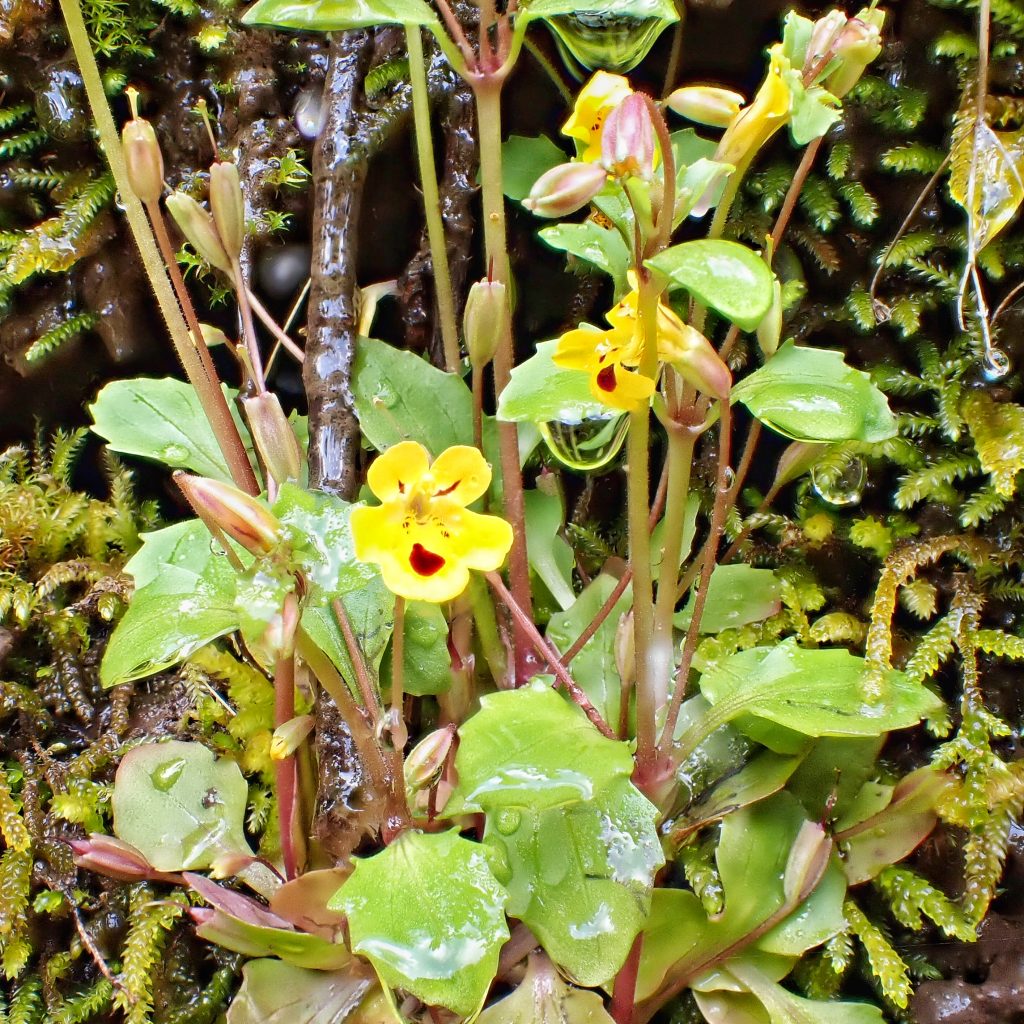
But it doesn’t need our approbation. It doesn’t need to have any function whatsoever. It is an integral part of its biome, regardless of its perceived relationships within that biome, or lack thereof. Organisms exist within the ‘web of life’ because they can, not because of their connection to other things. Nature is not a machine where each part only serves the functioning of the whole. It is an evolving mosaic where each organism fits in where it can. But each organism is still integral to the whole, because without it, it wouldn’t be a whole.
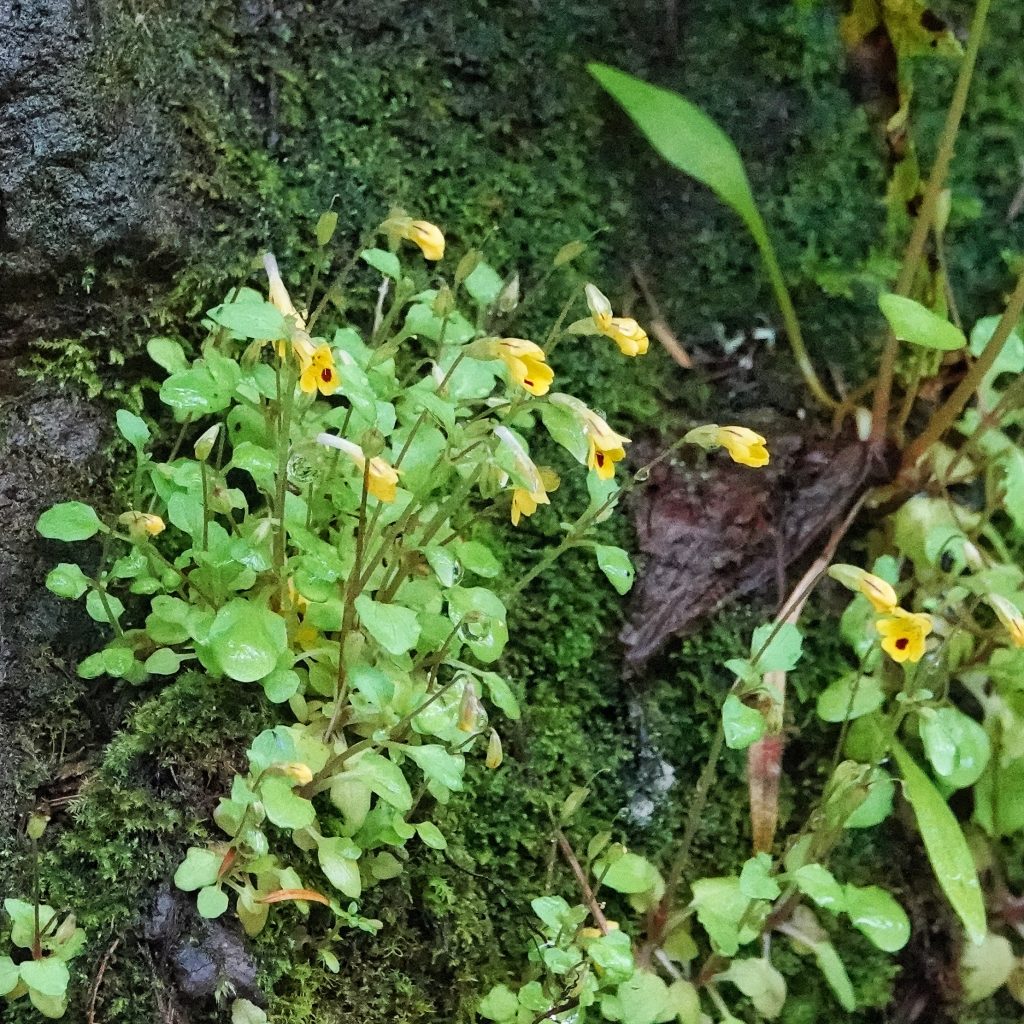
This species (and many others) were for many years placed in the genus Mimulus in the family Scrophulariaceae, but the taxonomists have come to the conclusion that it fits better in the genus Erythranthe in the family Phrymaceae. This may be the last word on the subject, but it is probably not. The little ‘chickweed monkeyflower’ doesn’t care what we call it, and, were it capable of thinking, I’m sure it would be amused by our efforts to impose order on the ongoing, and inherently messy, process of evolution. I know I am.
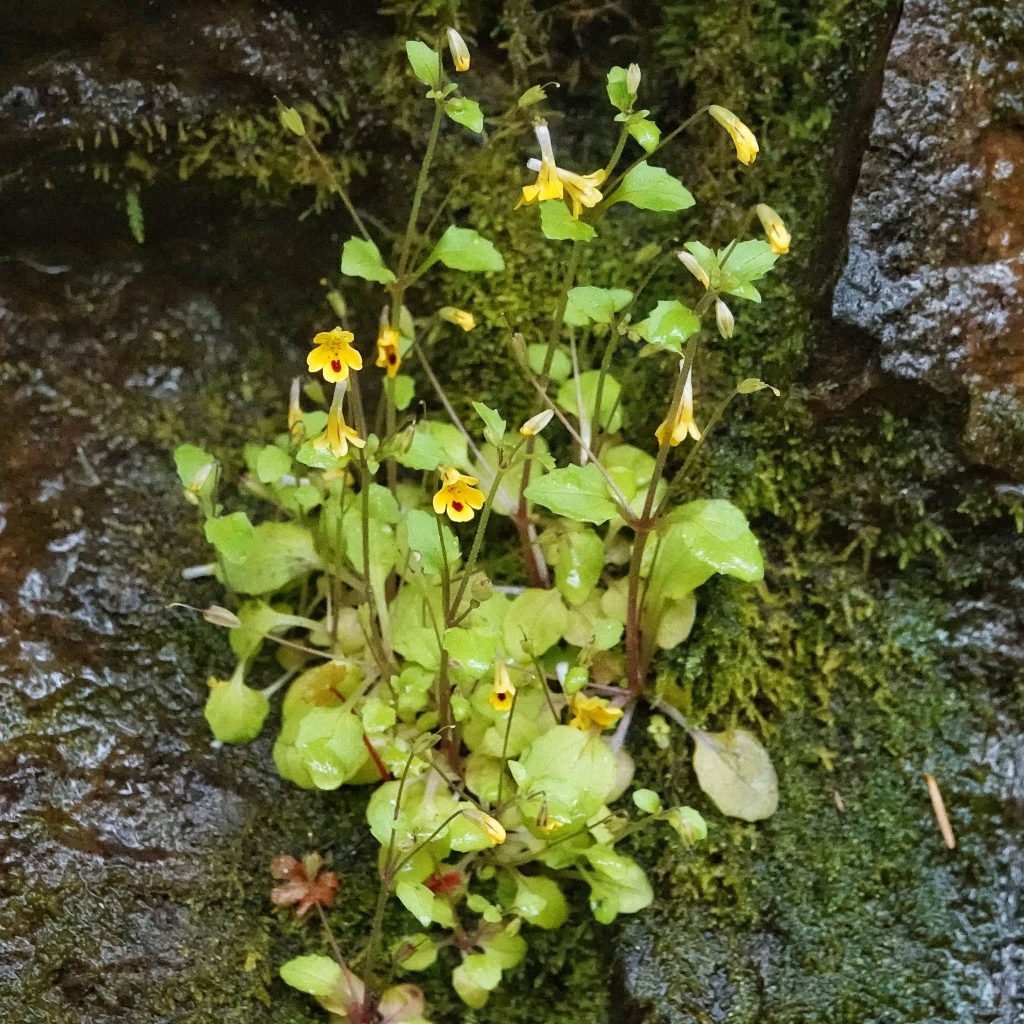
Same old Facebook note-For a variety of reasons, most of which have to do with regulating my blood pressure and freeing up significant blocks of time, as of May 15 I will not be routinely sharing links to these posts in many of the Facebook groups to which I belong. I am sorry for the inconvenience, but anyone wishing to see new profiles after that date can friend and follow me on Facebook (all posts will be shared to my timeline/wall/page), or take advantage of the free subscription option on the website.
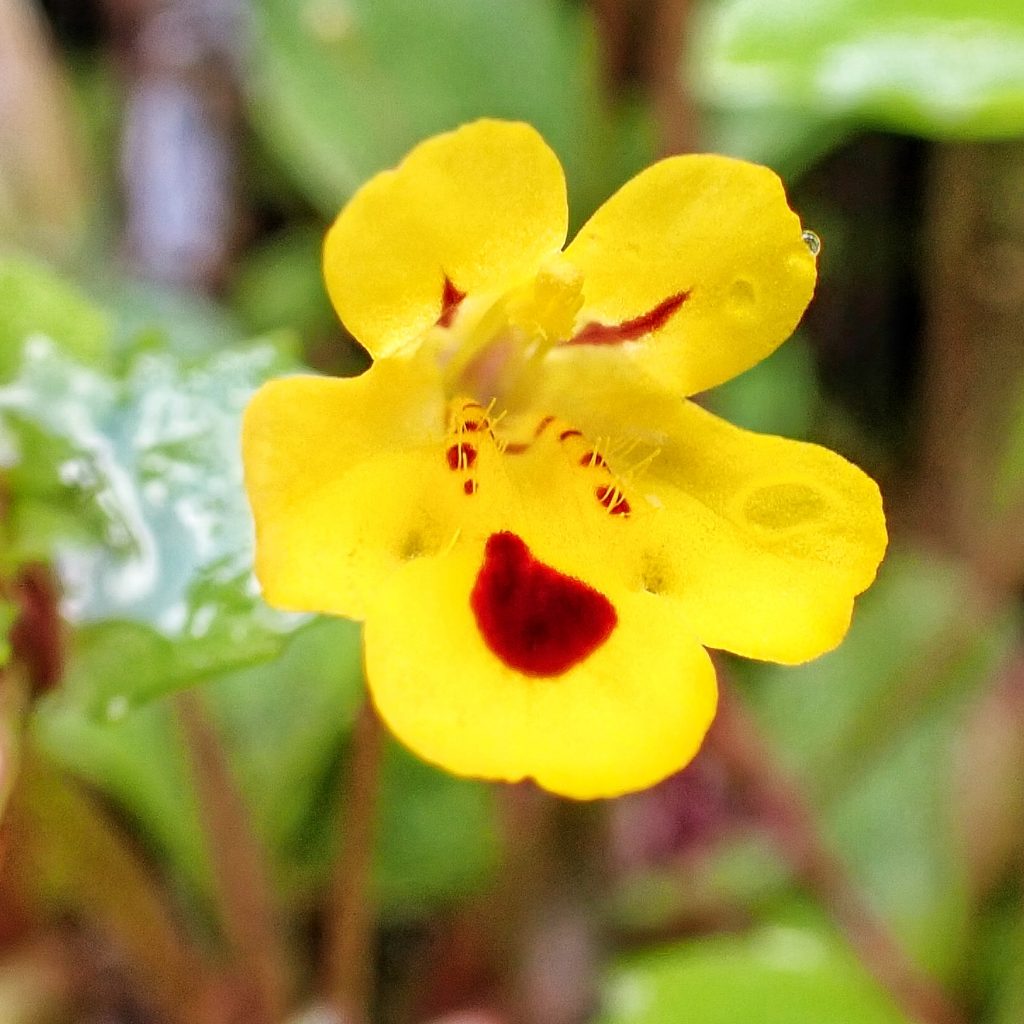
Description-Small (usually less than 7” tall) annual plant with small (up to an inch long) green to reddish, oval, toothed, palmate veined, opposite leaves; pedicel is reddish and extends well beyond the leaves; flowers are small (usually less than 11mm long by 8mm wide), yellow, with two lobes above and three below, with a large maroon spot on the lower lobe, and usually other red marks in the throat, as well as small red slashes in the middle of the upper lobes.
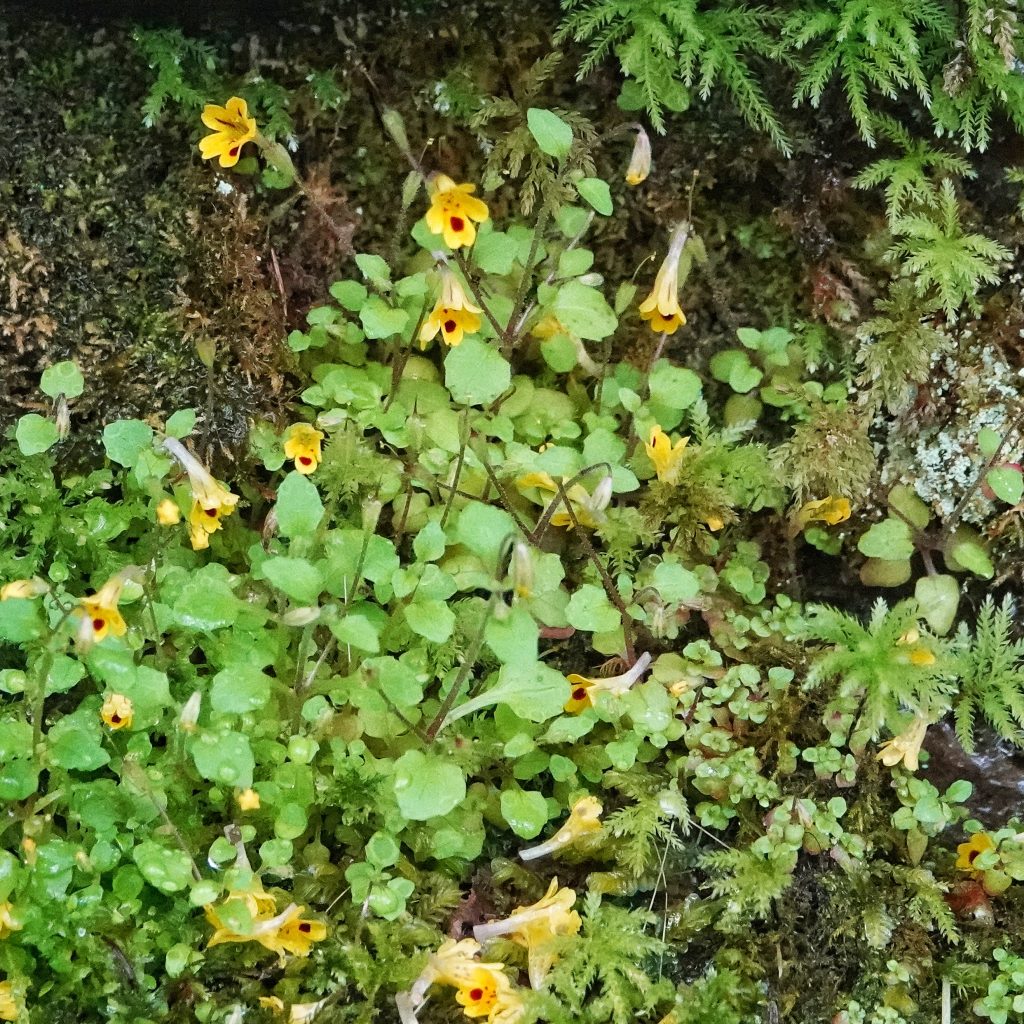
Similar species– Other Erythranthe sp. are larger plants with larger flowers and/or lack the large maroon spot on the lower lobe.
Habitat-Shady, vernally wet cliffs and ledges, often in moss mats, up to 5,000’, but more common at lower elevations.
Range-West Coast North America; from the east slope of the Cascades to the Pacific, and occasionally in other appropriate forested habitat in the Rockies and it’s spur ranges.
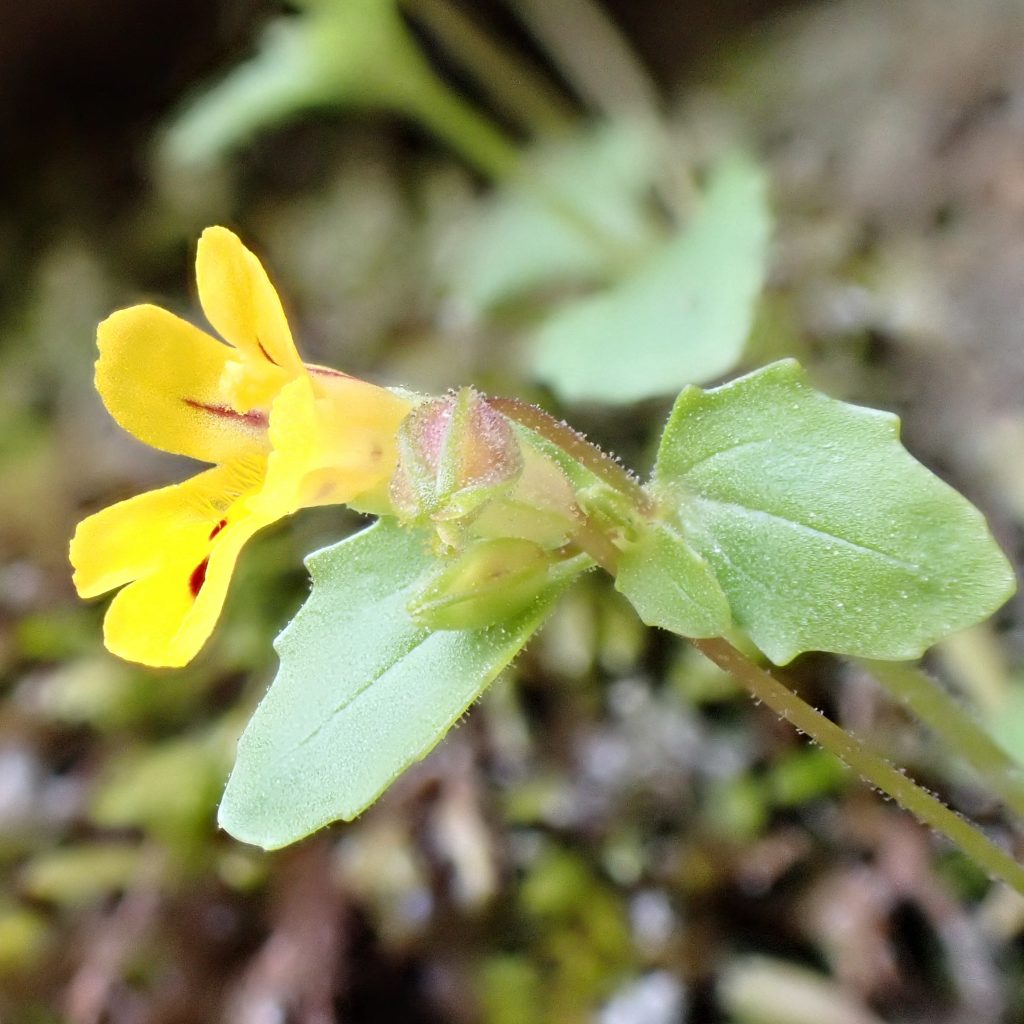
Reproductive timing– Blooms mid March to mid June
Eaten by-A few Annaphila sp. and Abagrotis variata larva are known to feed on Erythranthe sp., but I can find nothing specific for E. alsinoides.
Etymology of names– Erythranthe is from the Greek words for ‘red bloom’, and refers to the color of the flower of the type species, Erythranthe cardinalis. The specific epithet alsinoides is from the Greek words for ‘like chickweed’.
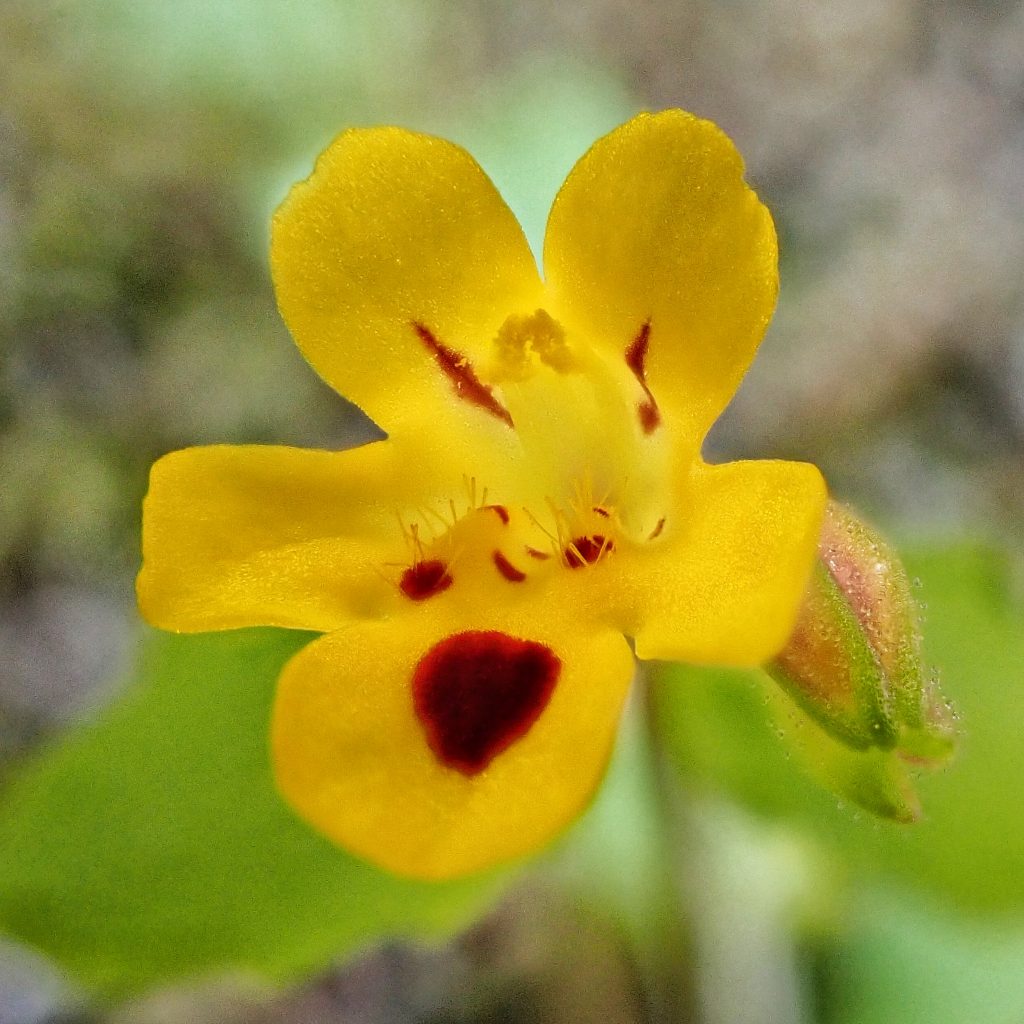
http://linnet.geog.ubc.ca/Atlas/Atlas.aspx?sciname=Mimulus%20alsinoides
http://beta.semanticfna.org/Erythranthe_alsinoides
https://en.wikipedia.org/wiki/Mimulus
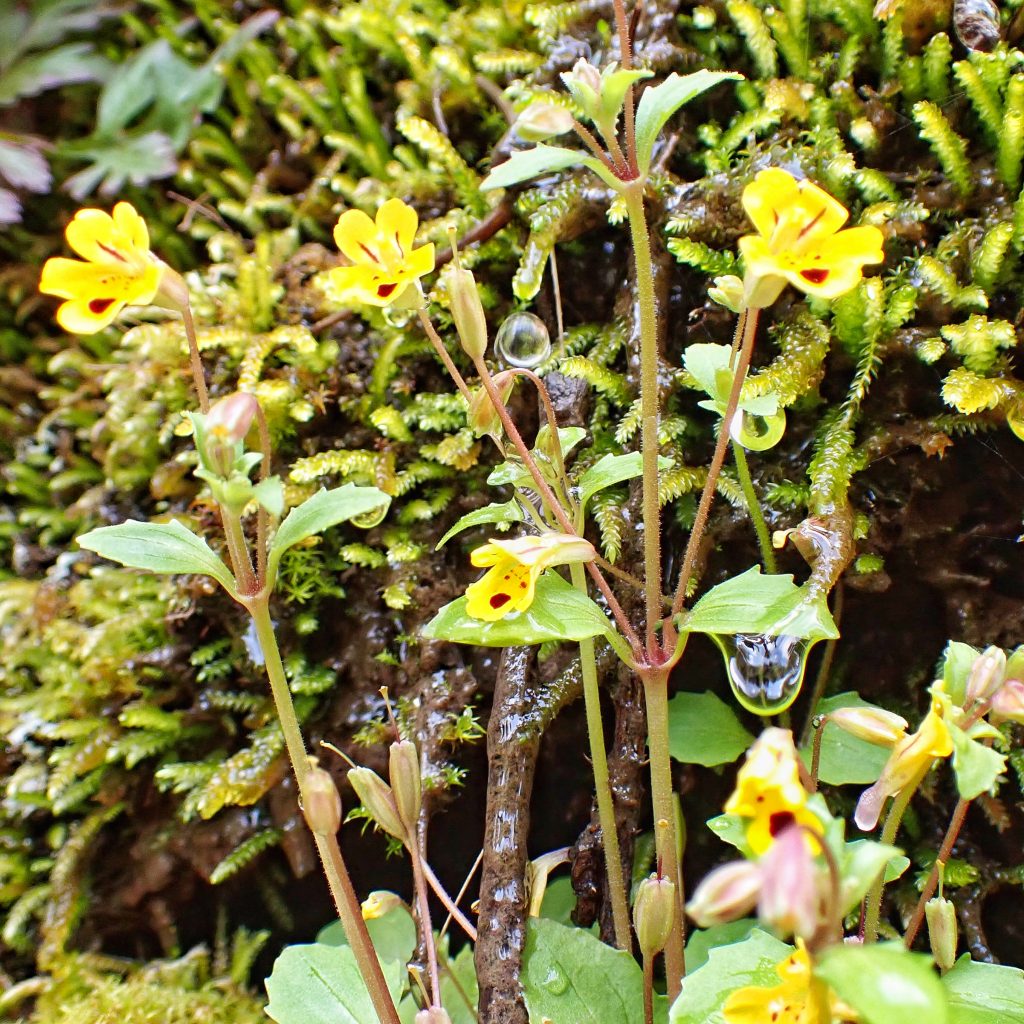
Definitely keeping my eyes open for this!
These are often found near natural hot springs in central Idaho near tributaries of the Salmon River as well. The larger pink Dwarf Monkeyflower can be found on the harsh terrain of Craters of the Moon in SE Idaho.
Cool! It’s a beautiful plant, and I’m glad you have gotten to see it!